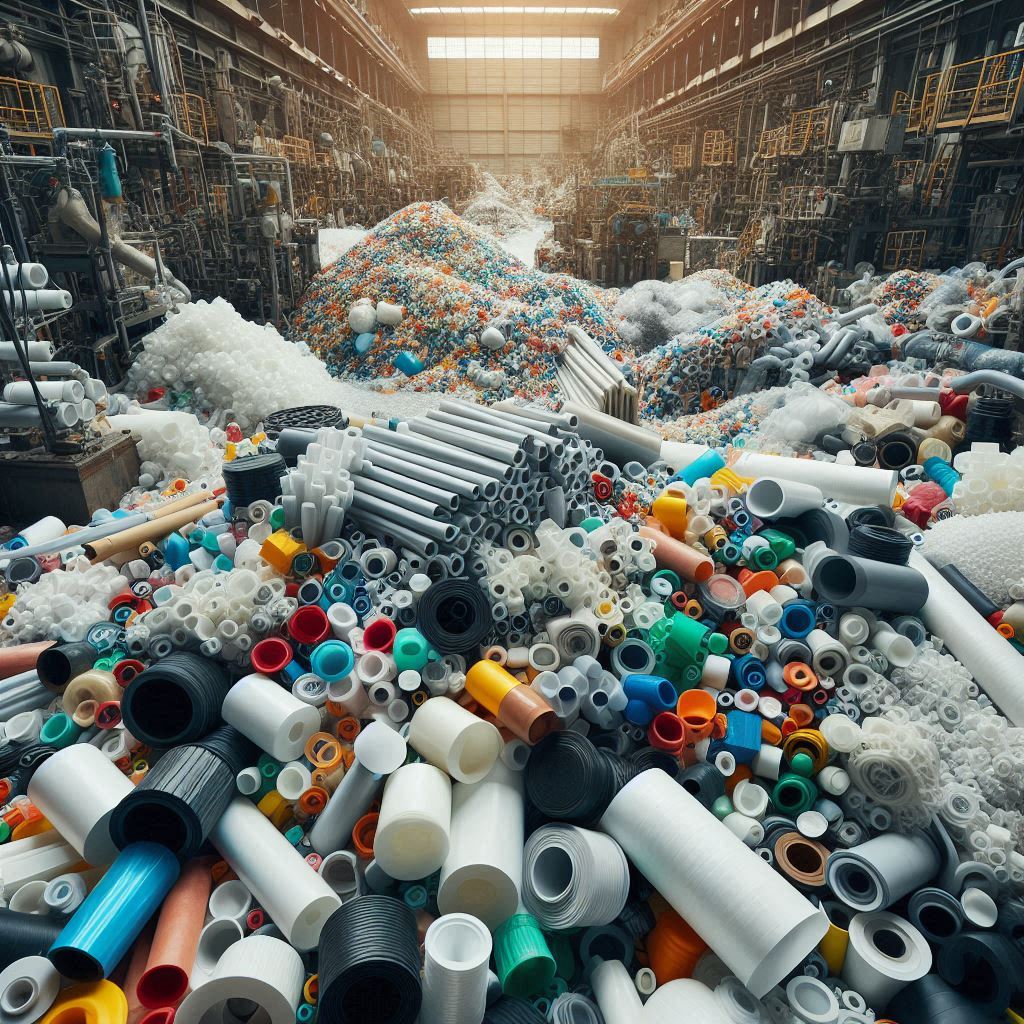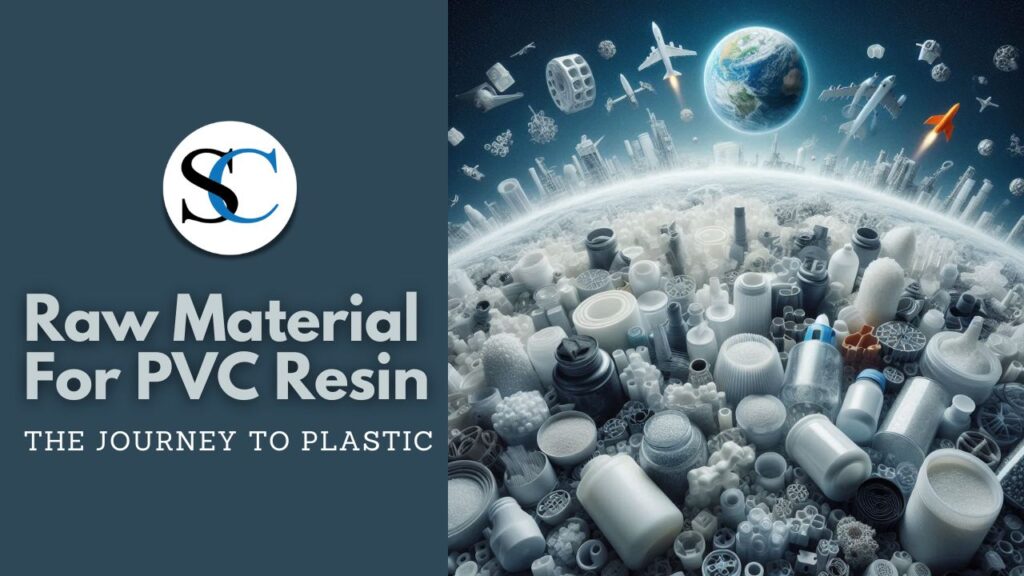Raw Material For PVC Resin: Imagine a world plastic: no smartphones, credit cards, no syringes for vaccines. The omnipresence of plastic in our daily lives is undeniable, but have you ever paused to consider the raw material from which much of this plastic originates? Today, we’ll delve into the fascinating journey of one particular plastic—PVC resin—from its raw material to its final form.
The Origins: What is PVC Resin?
What is PVC?
PVC, or Polyvinyl Chloride, is a versatile plastic commonly used in various applications, from construction to medical devices. Recognized for its durability and resistance to corrosion, PVC has become an essential part of modern life.
The Key Ingredients
The journey to creating PVC resin starts with a combination of two primary raw materials:
- Ethylene: This is derived from crude oil through a process called cracking.
- Chlorine: Obtained from salt through an electrochemical process.
These two substances merge to create the fundamental building block of PVC—Vinylide Monomer (VCM).
The Creation: From Raw Material For PVC Resin to VCM
Ethylene Production
Crude Oil Cracking
Ethylene, a hydrocarbon, comes from the cracking of crude oil. This process breaks down long chains of hydrocarbons into simpler compounds, making ethylene one of the most valuable byproducts. Cracking involves:
- Thermal Cracking: Using heat to break down hydrocarbons.
- Catalytic Cracking: Using catalysts to facilitate the breakdown at lower temperatures.
Chlorine Production

Electrolysis of Salt
To produce chlorine, an electrochemical reaction known as the electrolysis of brine (saltwater) is employed. This process involves:
- Electrolysis Cell: An electric current passes saltwater through an electrolyzer, decomposing it into chlorine, hydrogen, and sodium hydroxide.
Synthesis of Vinyl Chloride Monomer (VCM)
Once we have ethylene and chlorine, they are combined to create Vinyl Chloride Monomer, the precursor to PVC resin. This reaction occurs through a process called chlorination and pyrolysis:
- Direct Chlorination: Ethylene and chlorine react to form 1,2-Dichloroethane.
- Pyrolysis: 1,2-Dichloroethane is then heated to produce Vinyl Chloride Monomer and hydrogen chloride.
Polymerization: Turning VCM into PVC Resin
Having synthesized VCM, the next step is to polymerize it into Polyvinyl Chloride. The polymerization process forms long chains of repeating VCM units, transforming the monomeric gas into a solid resin through:
Suspension Polymerization
In this commonly used method:
- VCM is Dispersed: The VCM is suspended in water, forming droplets.
- Polymerization Initiator: A catalyst (or initiator) starts the chemical reaction.
- Formation of PVC: The VCM droplets polymerize into solid PVC particles suspended in water.
Emulsion Polymerization
Another method is emulsion polymerization, characterized by:
- VCM in an Emulsion: VCM is emulsified in water with the help of surfactants.
- Highly Controlled: This process allows for the production of very fine PVC particles.
Applications: Where Does PVC Resin End Up? – Raw Material For PVC Resin
In Construction
PVC’s durability and resistance to environmental degradation make it ideal for:
- Pipes and Fittings
- Window Frames
- Flooring
In Medical Devices
PVC is vital in the healthcare industry due to its sterility and flexibility, making it suitable for:
- Blood Bags
- Tubing
- Catheters
Everyday Items
From credit cards to inflatables, PVC is ubiquitous. Other common items include:
- Vinyl Records
- Shower Curtains
- Electronics
“Without PVC, many critical medical devices would not exist, revolutionizing healthcare standards.”
Conclusion: Raw Material For PVC Resin
The journey from raw materials to PVC resin is a complex yet fascinating process. Beginning with crude oil and salt, through intricate chemical reactions, and ending as a versatile polymer used across various industries, PVC’s story is truly remarkable. Understanding this journey not only deepens our appreciation for everyday items but also underscores the importance of innovation in material science.
Whether it’s constructing buildings, saving lives with medical devices, or simply making daily life more convenient, PVC resin plays an invaluable role. So next time you come across a piece of plastic, remember the incredible journey it undertook to get there.
Call to Action: If you found this exploration interesting, share it with friends or colleagues to spark more curiosity about the materials shaping our world!
PVC Chloride: The Ultimate Guide For Industrial Use





